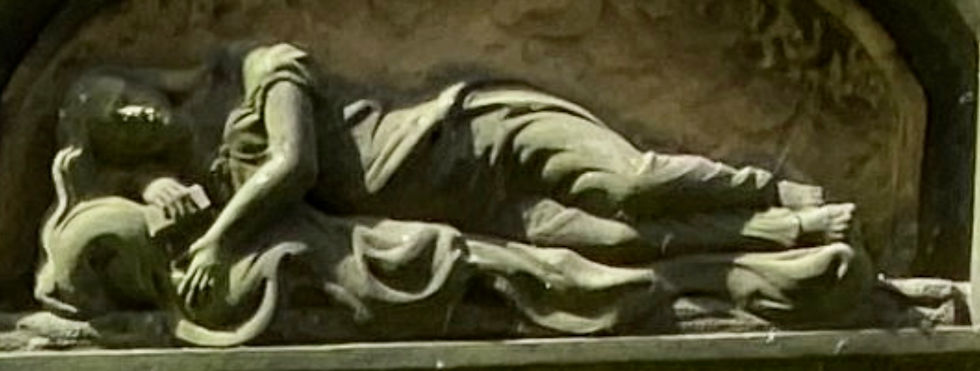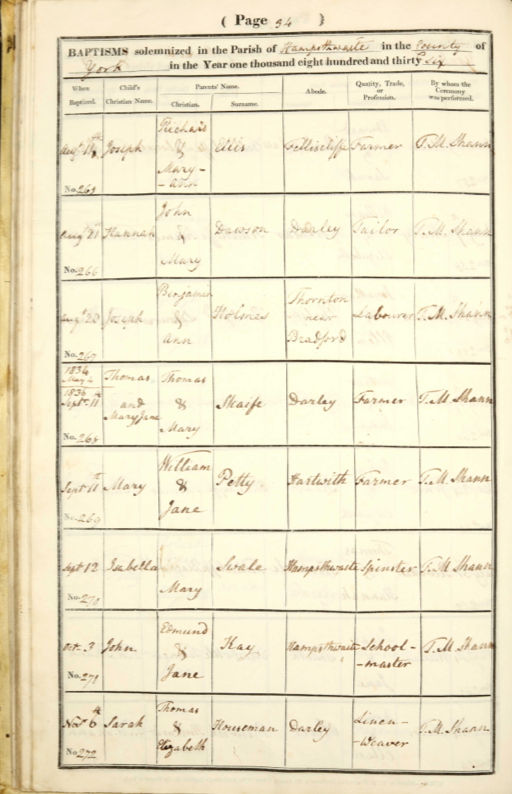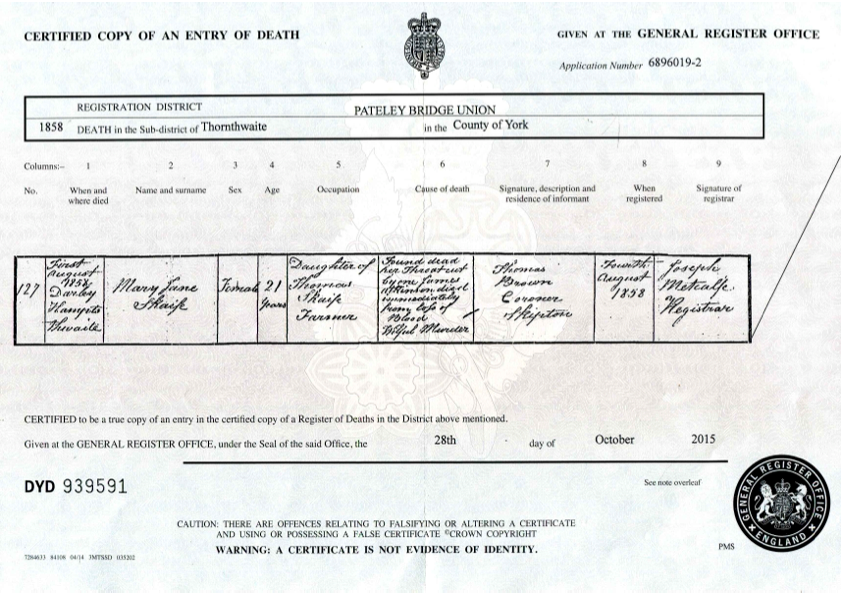Remembering Mary-Jane Skaife.
- Mark Anthony

- 3 days ago
- 2 min read

On 11 September 1836, the birth of Mary-Jane Skaife was officially registered in the parish of Hartwith, Nidderdale. Born into a rural Yorkshire family, Mary-Jane grew up in a world defined by chapel, farm, and community. Yet her life was not bound only to the valley — she had already lived and worked in Manchester before returning home, determined to begin a new chapter for herself. That choice speaks of courage, independence, and ambition: a young woman ready to step into her own future.

But her story took a devastating turn. On 1 August 1858, aged just 21, Mary-Jane was murdered on Stumps Lane, Darley, by her lover James Atkinson. The court ruled him insane under the new M’Naghten Rules, sparing him justice, while Mary-Jane’s voice was silenced.
And yet, across the centuries, Mary-Jane still speaks.
Her grave at St Jude’s Church, Hartwith bears an inscription that captures both her fate and her dignity:
The stone itself carries a haunting carving, a reclining lamb at her head, a traditional Christian symbol of innocence and sacrifice. In Mary-Jane’s case, it is chillingly apt: a reminder of a life cut short, yet also of purity and endurance beyond violence.

“The victim of the murderer’s blade,
Beneath a gory corpse was laid;
Her soul, we trust, to realms has flown,
Where theft and murder are unknown.”
When she was buried, the grave was said to be overflowing with flowers, a testament to how deeply she was loved. Today, more than 160 years later, her resting place still draws us to reflect not only on her death but on the life she was determined to build.
Mary-Jane’s legacy is more than tragedy. It is her bravery in leaving home to work in Manchester, her determination to return and start anew, her strength in navigating a world that gave women few choices and little protection. From the silence of her story, we hear the echoes of many women whose lives were constrained, erased, or redefined by others.

Through Sweetheart: Angel of the Moor, we aim to place her back at the centre of her own story, not as a passive victim, but as a woman of spirit, hope, and humanity. Her life, though brief, reaches forward to us today. She becomes a symbol of resilience, of remembrance, and of the voices that must never again be silenced.
Mary-Jane Skaife is no longer forgotten. Her story belongs not just to history, but to all of us who continue to fight for justice, voice, and freedom.





Comments